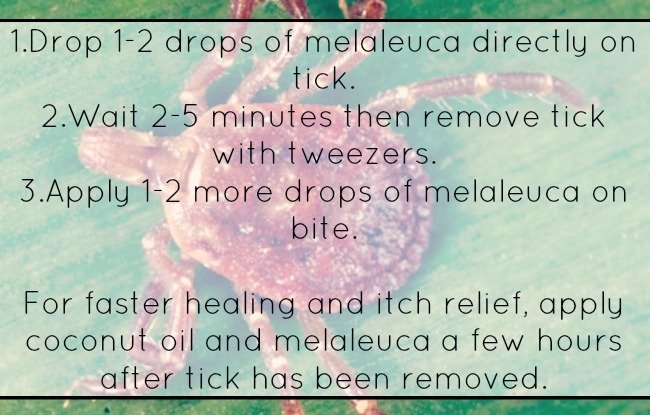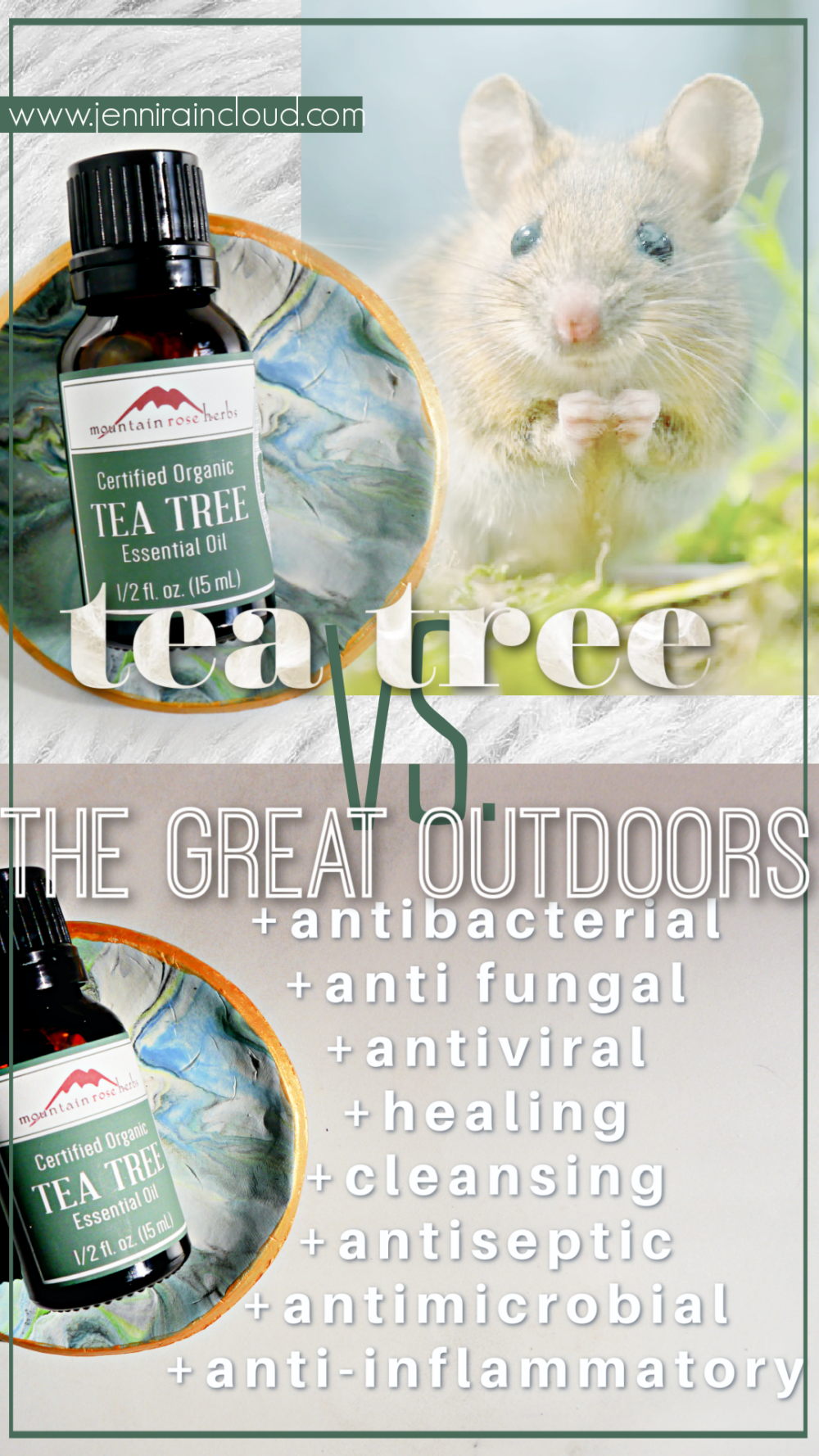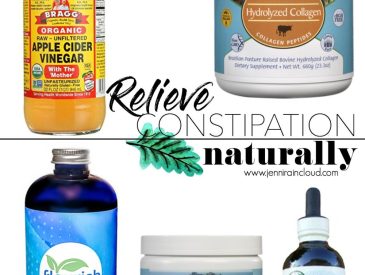
Spring is officially here for most of us and with that comes all kinds of creepy crawlers. If you all keep up with my Facebook and Instagram page you might know not many days go by without me experiencing nature in a very intimate way. For example, a couple of weeks ago I got bit by a mouse, a big one. Yesterday I carried 2 baby snakes out of the house. This spring we also have a resident tarantula living in a flower bed very close to the front door. I realize I’m giving you the impression I live in some kind of hell hole. I don’t, it’s just that my 3 kitties feel sorry that we can’t hunt our own food so they compensate. They REALLY like us.

First, I need to preface this post by letting you know I’m NOT a “better safe, then sorry” kinda gal. I avoid medical intervention 99% of the time and I recognize this often makes me a bit controversial.
I am not a professional of any kind when it comes to spider, tick, mosquito, snake or animal bites and am only sharing what works for me and my family.
And just to be clear, I’m not talking about bites from poisonous snakes or spiders or animals that could be rabid. I actually have never been bit by a poisonous spider or snake. I have a plan, but since I’ve never experienced it for myself, I’m just not qualified to speak on it.
As I mentioned, I was bit by a rodent a few weeks ago and just had a long, in-depth conversation with my bug man and it inspired me to share the information I’ve learned.
The Bug Man & The Spider Bite:
My bug man was recently bit by a brown recluse spider. These spiders are very common and hide in most of our houses. You very likely have a couple in your house now. They are very non-agressive, small spiders and their bite is not painful. However, they have a strong venom that eats away at skin tissue. Their venom is very similar to that of a rattle snake. He did not go to the hospital being the tough bug guy he is. In fact, he continued to work and noticed the next day that his leg was throbbing with pain, red and terribly swollen. After an 8 day stay in the hospital, he lives to tell that it was not the venom that got him-it was the infection that occurred from not properly cleaning and dressing the bite.
I could go on and on about bugs, spiders, ticks and other wild animals, I find them fascinating but my point in writing this post is to urge you to be prepared. You never know what’s lurking around the corner! The first few minutes after being bitten are absolutely crucial.
Fun Fact About Tea Tree Essential Oil
- Tea Tree Essential Oil is one of the most powerful anti bacterial oils there is.
- It also is antiviral, antimicrobial, antiseptic and anti fungal plus it helps with inflammation.
- Tea Tree is native to Australia and has been known as a medical cure-all for centuries.
- It is extremely healing and cleansing.
- Tea Tree is pretty gentle and can be used on children. When using it on myself I do not dilute with a carrier oil, however, dilute it if you are concerned of skin sensitivity.
- Funny thing, tea tree has also been called “snake oil” due to it’s effectiveness against snake bites.

Helpful Items When Treating a Bite:
- Hydrogen Peroxide
- Activated Charcoal-#1 go-to to pull out venom even from mosquitoes!
- Bentonite Clay-also incredibly effective in pulling out impurities from the skin.
- Tea Tree Essential Oil
- Band aids or medical tape
My Non-Venomous Bite Protocol:
- Allow the wound to bleed if it will-Blood helps rid the wound of infection.
- Clean thoroughly and liberally with hydrogen peroxide. This is very important.
- Apply 1 drop of melaleuca every 10 minutes for at least an hour.
- Continue to apply melaleuca throughout the day. Cover with a band aid/medical tape.
- Keep a close eye on the wound and how it’s healing. You have very little chance of infection after melaleuca but it’s good to be aware. If pain or throbbing increases as the day goes on, you could have tetanus.
What I learned when I was bit by a rodent was that it is highly unusual for a rodent to carry rabies. They do however carry other bacterial diseases including tetanus-not to mention, they aren’t the cleanest animals. This big guy bit me twice. The 2nd time he held on to my finger as I writhed in pain-that little dude has quite the teeth.
*If bit by a non-rabid animal, be aware of stiffening and throbbing around the wound, in the muscles and jaw. Lock jaw is the most common symptom of tetanus. Fever, sweating, high blood pressure and a rapid heart rate are also symptoms.
I did not get the vaccine. The side effects of this vaccine are vast and there was no way I was going to expose myself to a toxic chemical overload. There are MANY articles about treating tetanus, naturally. Trust me, I wasted A LOT of time worryingly researching after the bite. If you contract tetanus, the sooner you get on a natural treatment the better. I did find that you have 72 hours to get the tetanus vaccine after being exposed.
Rabies
Let me add a quick side note on rabies. There are very few reported rabies cases a year in the US and a high majority of those are from wild animals. The most common animal to carry rabies is a racoon. Skunks, coyotes, foxes, bats, opossums, rabbits, dogs and cats can also carry rabies. Characteristics of a rabid animal are excessive drool, walking around as if drunk and acting tame and not running when you approach it. Rabies is not common in humans, however it is fatal. There are only about 3 cases of humans contracting rabies in the US each year. It is only contracted through saliva in an open wound. Rabies is a viral infection.

Tea Tree Essential Oil for Tick Bites
Enough about that mouse. Let’s move on to tick bites. There has been a lot of buzz on Lyme disease lately (especially if you watch The Real Housewives of Beverly Hills ;)). Lyme Disease comes from the deer tick. It is an infectious disease caused by bacteria. When a person contracts lyme disease, a red ring will often form around the tick bite. We battle ticks like crazy. At any given moment during the summer my girls and I have at least 2 tick bites on us at all times. The bites are terrible. They swell and itch and last for ages, not to mention the risk of lyme Disease.
What is the best oil to heal and protect after a tick bite?? You guessed it-Tea Tree Essential Oil!
I use it to remove the tick-1 drop directly on the tick will cause him to loosen his grip within a few minutes. Once the tick has been removed, I apply 1-2 more drops. I often will reapply tea tree essential oil a few hours after the bite and then coconut oil to relieve the itching and speed up healing.
Since tea tree essential oil is such a strong anti bacterial oil, I believe you are greatly decreasing your risk of Lyme disease by applying it during and after a tick.
In case you’re wondering-that big mouse made it out alive. In his defense, he had 3 big kitties pouncing on him and a yapping Yorkie. Poor thing had a lot to talk about with his big mouse friends that night!
And, if you haven’t had enough talk of bugs go HERE for my bug repellent recipe and for my bug bite balm go HERE.
Happy Spring!
xx, Jenni
[optin-form]
PIN IT!!!






